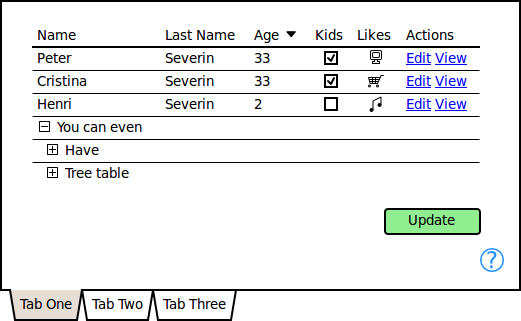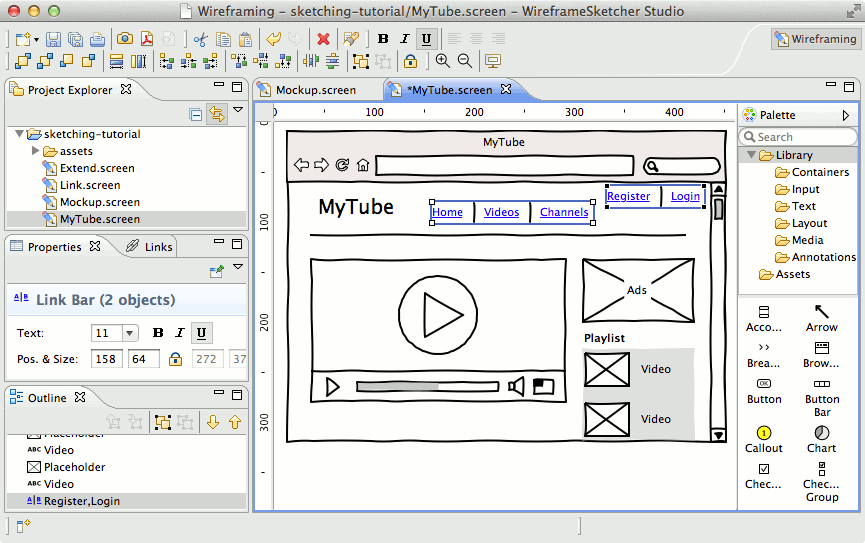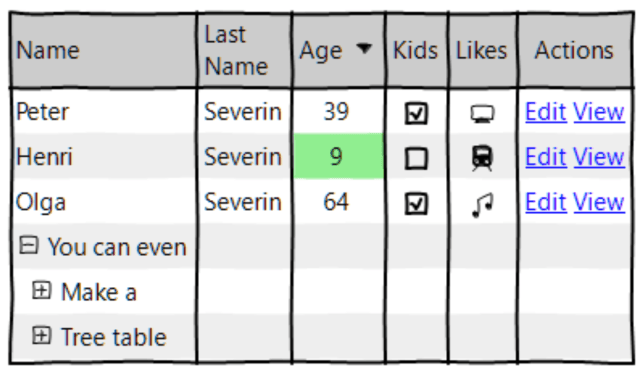
In the above application flow we have five boxes representing a simple online store a storefront screen, a browse screen, a checkout screen, a sign in screen, and a shipping confirmation screen. The Application Flow panel in Blend enables you to create a simple layout and flow for your application.įigure 3 - A simple application flow for an online storeĪs shown in the above diagram, the Application Flow is used to compose a simple workflow for the navigable screens of your prototype. Both project types offer the same prototyping functionality, however the asset library offered depends on the platform chosen.Īfter creating a new project in Expression Blend 3, the first component that you’ll likely run across is the “Application Flow”. One for WPF (Windows Presentation Foundation) client based applications, and one for Silverlight applications hosted within the Web browser.

SketchFlow – Getting into the DetailsĮxpression Blend 3 supports two different types of SketchFlow projects. While interaction designers will likely make up the majority of the users of Blend, I believe that the SketchFlow functionality also makes for an attractive proposition for many developers – many of whom have been prototyping for some time, using whiteboards through to creating mockups of screens in Visual Basic or other tools. If you’ve heard of the Expression Blend family of products, you’ll likely know that the Expression Blend tool is marketed toward the designer community. In this article we’ll be exploring the functionality within SketchFlow, covering how it works in a soon-to-be-released preview edition, and looking at how such a tool could make your prototypes more usable and effective. As described by Group Program Manager, Christian Schormann on his blog, SketchFlow is a fun, informal, flexible, quick and powerful way to sketch and prototype rich, dynamic interactivity with Expression Blend. To help address some of the issues with prototyping, at MIX09 in March 2009, Microsoft announced a new technology called SketchFlow, which will ship as part of Microsoft Expression 3. Often, we’ll put together a PowerPoint deck of screenshots and send it to the user without having the ability to share the context or interactively take them through the design. Moreover, taking a user through any type of prototype can be very tricky, especially those users based in remote locations. In addition, high fidelity prototypes tend to draw users into a conversation about the finer aspects of the design, such as “Shouldn’t that blue be the same shade as our company logo?” rather than focusing on the overall design of the layout. The user believes that because the prototype looks so close to the finished product, too much work has already gone into the application, and they often are held back in suggesting such changes. I’ve seen examples where users have been frightened to ask for major changes in a high fidelity prototype due to the amount of work that they feel may have to be done to make a change.

While they work well in board meetings to show what a finished product could look like, the polish that has been applied can often be too overwhelming for many users. Because of the rough format of the low fidelity prototype, I’ve been greeted with looks of confusion when walking into the board meeting with nothing more than a flipchart the executives thinking “Don’t we pay you to write software?”Īs you might expect, high fidelity prototypes suffer from the opposite problem.

An example I’ve found is when updating the executive team at the next board meeting. With that said, there are situations where low fidelity prototypes don’t work as well. As the prototype is nothing more than a sketch, users tend to assume that it will be easy to incorporate feedback and as a result are much more open about giving feedback. Low fidelity prototypes are typically very effective at getting user feedback as they express the raw functionality of the application without losing the user on the details.

Figure 2 - An example of a High Fidelity Prototypeīoth low fidelity and high fidelity prototypes have their places in the development lifecycle.


 0 kommentar(er)
0 kommentar(er)
